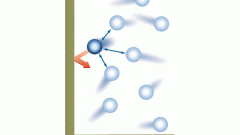Instruction
1
It was established experimentally that at constant temperature P1V1=P2V2 or, equivalently, PV=const (law of Boyle). At constant pressure, the constant is the ratio of volume to temperature: V/T=const (the law of Gay-Lussac). If you lock the volume, then P/T=const (law of Charles). The Union of these three laws gives the universal gas law, which States that PV/T=const. This equation was established by the French physicist B. Clapeyron in 1834.
2
The value of the constant is determined only by the amount of substance of gas. D. I. Mendeleev in 1874, derived an equation for one mole. So he got the value of universal gas constant R=8,314 j/(mol * K). So, PV=RT. In the case of an arbitrary number of gas ν PV=νRT. The sheer number of substances can be found from the ratio of the mass to the molar mass: ν=m/M.
3
Molar mass is numerically equal to relative molecular. The latter can be found from the periodic table, it is indicated in the cell element, usually at the bottom. The molecular mass of the compound is equal to the sum of molecular masses of its constituent elements. In the case raznosortnyh atoms requires multiplication by the index. Onwhenmeasures M(N2O)=14∙2+16=28+16=44 g/mol.
4
Normal conditions for gases inNATO assume pressure P0 =1 ATM = 101, 325 kPa, temperature T0=273.15 K = 0°C. Now it is possible to find the volume of one mole gas at normal conditions: Vm=RT/P0=8,314∙273,15/101,325=22,413 l/mol. This table value is the molar volume.
5
Under normal conditions the amount of substance equal to the ratio of the volume of gas to the molar volume ν=V/Vm. Under arbitrary conditions, it is necessary to use directly the equation Mendeleev-Clapeyron: ν=PV/RT.
6
Thus, to find the volume of gas at normal conditions, it is necessary the amount of substance (number of moles) of that gas multiplied by the molar volume equals 22.4 l/mol. The reverse operation it is possible to find the amount of substance of a specified amount.


